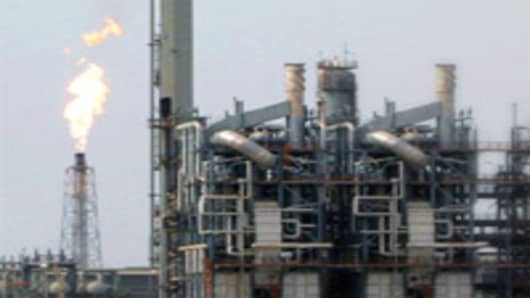It’s been a news-heavy week for oil markets, with the International Energy Agency publishing its monthly oil market report following OPEC’s forecasts and comments by senior oil officials earlier in the week.
Both reports moved to cut their demand growth forecasts, with the IEA writing off 50,000 bpd for this year, and 210,000 bpd from its 2012 estimates.
OPEC had trimmed its outlook for the fourth consecutive month for 2011 by 180,000 bpd. As such the IEA’s oil global demand expectations paint a more bullish picture for the remainder of year, seeing consumption of an additional 1.5 million bpd for a total of 89.2 million bpd.
OPEC and the IEA once again make clear references to the key downside risks posed by the euro zone debt crisis.
The former points to fragile economic prospects as a consequence, while OPEC bluntly described the sovereign debt challenges as a “key threat going forward”. The 12-member group went on to argue that the uncertainty has contributed to increasingly volatile prices, characterized by steady rises followed by sharp falls.
In an interview with CNBC earlier this week, the CEO of Saudi Aramco, Khalid Al Falih, admitted that they too were “concerned about the potential contagion” from Europe, calling on policy makers to “take the bull by the horn”.
Optimism on Libya
Meanwhile, OPEC’s monthly report reiterated that the WTI/Brent spread continued to benefit from strong demand for light crude and the “absence of Libyan grades”.
The IEA report noted that Libyan production “now looks on track to reach an average 400,000 barrels a day in the fourth quarter of 2011” and could reach 600,000 bpd by the end of the year.
In June the IEA had said it would take until 2015 for Libyan oil production to make a full recovery to its pre-war levels of 1.6 million bpd. The country’s National Oil Corporation (NOC) remains far more optimistic, seeing that return possible within 15 months. But experts have told CNBC that the output priority would go to satisfy domestic needs before actually hitting the export market in full force.
As much as the uncertainty may have “dimmed the picture for 2011”, to quote from OPEC’s report, demand for some specific crude grades reflect the strength of physical demand out of Asia. Official selling prices for Saudi’s main Arab Light November cargoes bound for Asia for example, reached a record premium high over the Dubai benchmark.
According to the latest OPEC data, Saudi Arabia cut its production by 122,000 bpd in September, with the IEA interpreting the “premature” move as a sign “that it intends to protect revenues”.
Al Falih told CNBC that the Kingdom had plenty of spare capacity that could be deployed to address shortages in the market. He was also much less concerned today than he was earlier in the year.
“We’re seeing prices come down to a much more reasonable level,” Al Falih said.
Following a difficult summer meet, OPEC reconvenes on December 14 in Vienna. The ongoing tensions between Saudi Arabia and Iran,further exacerbated by the latest revelation by US officials of a foiled assassinationplot, will prove unhelpful in negotiating an agreement and sending a clear message to oil markets.


